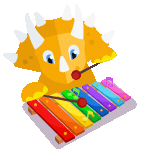Why Cantonese Has 9 Tones (And How to Hear Them!)
Cantonese is a fascinating language with a musical twist it uses nine tones to give words meaning. That means one word can sound different and mean something completely new depending on how it’s said!
To some kids, this may sound tricky at first—but it’s actually fun, like learning to sing or play a new instrument.
What Are Tones in Cantonese?
A tone is the pitch or melody of your voice when saying a word. In Cantonese, tones change the meaning of a syllable. For example:
- sī (high level tone) might mean “poem”
- sí (rising tone) could mean “history”
- si̍h (low falling tone) might mean “to try”
There are nine tones in total, but most beginners start by learning the six main ones, which are used most often in daily speech.
Can Kids Really Learn 9 Tones?
Yes! Children are great at picking up sounds. Just like they learn songs and rhymes, they can hear and repeat different tones in Cantonese with practice.
Using games, music, and repetition helps make the process natural and fun.
Dinolingo’s Cantonese course is designed for children aged 2–14 and includes games, songs, and stories that use real tones in real words. Kids can listen, repeat, and match tones while learning vocabulary in an interactive way.
The platform is available on web, iOS, and Android, and includes offline worksheets and flashcards for tone practice anywhere.
Creative Activities to Try
Tone Match Game
Say a word with different tones and let your child guess which one matches a picture or meaning. Use drawings to represent different meanings!
Sing the Tones Song
Make up a song that uses Cantonese tones in the melody. Use common words to build the lyrics kids will remember them better with music.
With time and playful practice, Cantonese tones become not only easier but fun to master!
Sources:
Start Learning a New Language Today!
Best Language App for Kids.
7-day free trial. Then only $19/month. Cancel anytime.
